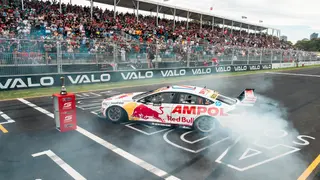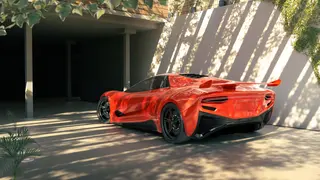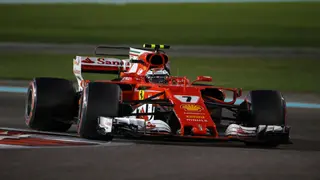Finally! A list of the best female race car drivers of all time
MotoGP
Are F1 cars manual? This intriguing question often sparks curiosity among racing enthusiasts and those eager to delve into the intricate world of Formula 1 technology. While they may not have a traditional manual transmission like your everyday road car, clutches in these high-speed racing machines are a fascinating blend of innovation and precision.

Formula 1, often hailed as the pinnacle of motorsport, stands as a symbol of cutting-edge technology, breathtaking speed, and unparalleled innovation. Amid the deafening roar of engines and the whiff of burning rubber, enthusiasts and casual viewers alike find themselves pondering many questions.
Formula 1 cars are not manual in the traditional sense. While they used to feature a manual transmission with a clutch pedal in the sport's early days, they have since transitioned to semi-automatic gearboxes. The driver operates these gearboxes using paddle shifters on the steering wheel.
Finally! A list of the best female race car drivers of all time
MotoGP
When the driver pulls on the paddle, the gearbox electronically and mechanically executes the gear change, making it much faster and more precise compared to traditional manual transmissions. So, while F1 cars do have a clutch, it is not manually operated by a pedal as in road cars, and gear changes are not achieved through a traditional manual shifter.
In the early days of Formula 1, the cars that graced the racetracks indeed sported three pedals, resembling the setup of your everyday road car. These iconic configurations featured an accelerator, brake, and clutch pedal, allowing drivers to manually shift gears with a traditional H-pattern gearbox.
The connection between the driver and the machine was palpable as they skillfully worked the pedals and gear lever to navigate the twists and turns of the race. However, as technology advanced at an unprecedented pace, so did the transmission systems of these racing machines. The traditional three-pedal setup began to give way to a revolution in Formula 1 transmission technology.
A list of the best race-driving schools in the world at the moment
MotoGP

Why are F1 cars manual? Well, they used to be. The transformation began with a groundbreaking innovation that would forever alter the course of Formula 1 history. The pivotal moment arrived at the 1989 Brazilian Grand Prix when Ferrari, one of the most storied teams in F1, introduced the concept of paddle-shifted transmissions.
This ingenious system eliminated the need for a traditional clutch pedal and gear lever, catapulting Formula 1 into a new era. Instead of manually coordinating clutch engagement and gear changes, drivers could now focus on precision and speed. The shift paddles, elegantly positioned just behind the steering wheel, became the new standard for gear changes in Formula 1.
The answer to this intriguing question is both yes and no. In modern Formula 1 cars, a clutch indeed exists, but it operates in a vastly different manner compared to a traditional road car. The clutch is seamlessly integrated into the sophisticated semi-automatic gearbox of an F1 car (operated by the driver using paddle shifters).
The top 20 best American sports cars of all-time ranked
MotoGP
When an F1 driver decides to engage the shift paddles mounted on the steering wheel, a highly advanced computerised system comes into play. This system orchestrates the intricate dance of clutch operation, gear selection, and gear engagement. The result? Smooth, rapid, and seamless gear changes that are the envy of the automotive world.
To truly understand the intricacies of Formula 1 transmission technology, it is essential to appreciate the marvel of semi-automatic gearboxes. These gearboxes are not merely gear-shifting mechanisms; they are technological masterpieces designed to deliver blistering speed and precision.
Formula One cars are equipped with sequential semi-automatic gearboxes that embody the pinnacle of engineering excellence. These gearboxes are engineered to provide lightning-fast gear changes, a critical factor in a sport where victory can hinge on the milliseconds it takes to shift gears. The utilisation of advanced technology ensures that gear changes occur with surgical precision, ensuring optimal power delivery and acceleration.
What are extreme sports? A list of all extreme sports played around the world
Other Sports

To succinctly address the perennial question—Are F1 cars manual or automatic?—the answer is that they are neither in the conventional sense. Formula 1 cars have evolved beyond the realm of traditional manual transmissions, and they are not automatic either. Instead, they have embraced a unique hybrid of transmission technology that combines the best of both worlds.
In the early days of Formula 1, when drivers navigated racetracks with the familiar three-pedal setup, technology was relatively rudimentary. The machines were advanced for their time but still retained elements of the traditional automotive world. It was an era when mechanical prowess and driver skill were paramount.
The introduction of paddle-shifted transmissions in 1989 by Ferrari heralded a new era. This innovation was inspired by the electro-hydraulic valves used in aircraft, providing lightning-fast gear changes that manual transmissions could never match. While this new technology encountered some teething problems initially, it quickly gained traction due to its undeniable advantages on the race track.
Which is the fastest F1 car ever? Find out all the details here
Formula 1

The success of paddle-shifted transmissions was so profound that by 1992, most Formula 1 teams had embraced this innovation, bidding farewell to the manual gear lever. By 1996, every Formula 1 vehicle had incorporated paddle shifts, solidifying the transition from manual to semi-automatic systems.
This universal shift in transmission technology not only redefined the way Formula 1 cars were driven but also had a lasting impact on the entire automotive industry. The lessons learned in the crucible of Formula 1's technological revolution filtered down to road cars, resulting in the proliferation of semi-automatic and dual-clutch transmissions in high-performance and luxury vehicles.
Today, Formula 1 stands as a testament to the marriage of human skill and technological prowess. The roar of the engines may sound familiar, but the transmission technology beneath the surface has undergone a remarkable transformation. The modern Formula 1 experience is characterised by rapid gear changes executed with surgical precision, all thanks to semi-automatic gearboxes and electronically managed clutches.
The different boxing styles explained: How many styles of boxing are there?
Boxing
In the realm of Formula 1, the question of whether F1 cars are manual or automatic transcends traditional definitions. These racing machines have evolved beyond the limitations of manual transmissions while harnessing the efficiency of automatic systems.
READ ALSO: Which is the fastest F1 car ever? Find out all the details here
Sports Brief published an article about the fastest F1 car ever. Formula One is one of the world's racing sports, recently gaining popularity and amassing substantial fan bases globally.
Since its inception in 1946, F1 races have been held to determine the world's best drivers and vehicle manufacturers. In the competitions, speed is a significant factor used to determine the fastest F1 car ever. Click the above link to read more!